COVID-19
Australian court rules COVID jab mandate for first responders violated Human Rights Act
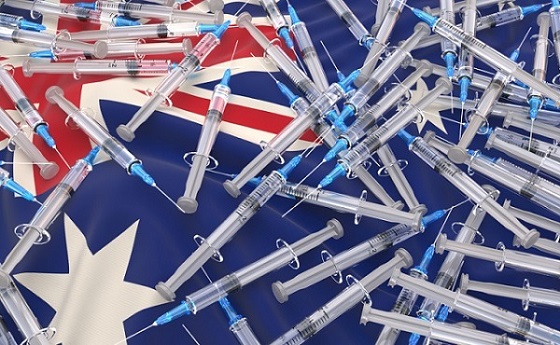
From LifeSiteNews
By David James
Mining billionaire Clive Palmer, founder of the United Australia Party, funded the action and said afterwards that he was willing to back other class actions by affected workers. He called for the presidents and executives of the Queensland Police and Ambulance unions to “do the honourable thing and resign from their roles
In another blow to the legitimacy of Australian governments’ anti-COVID-19 measures, among the most severe in the world, a judge in the Queensland Supreme Court has ruled that the COVID shot mandates for police and ambulance staff were unlawful.
The judge, Glenn Martin, found that there was a breach under the Human Rights Act: specifically the right not to be subjected to non-consensual medical treatment. He ruled there was a failure “to give proper consideration to a human right relevant to the decision,” rendering the mandate unlawful.
The judge ordered that the police commissioner no longer take steps to enforce the mandates or continue any disciplinary proceedings. He ordered that the director general of Queensland Health also be restrained from any enforcement of the vaccine direction, and that no disciplinary proceedings could be taken against those applicants.
READ: South Australian court rules employers who mandated COVID jabs can be held liable for injuries
Although on the face of it the decision has potentially far reaching consequences for the many Australian workers who refused to comply with mandates, the finding was based on a technicality, rather than a matter of ethical or legal principle.
Health Minister Shannon Fentiman said the ruling was made “in relation to how the directives were made, not the directives themselves.” She said the judge found that limiting people’s human rights in having healthcare imposed upon them without consent was “justified because of the pandemic.”
It indicates that Australian judges continue to work on the basis that COVID-19 was a deadly pandemic, which justified suppressing individuals’ right to make decisions about their own health. Contrary to that assumption, the Australian Bureau of Statistics (ABS), which compiles its records from death certificates, found that 2020 and 2021 had the lowest level of deaths from respiratory diseases since records have been kept.
So where was the pandemic? The answer is in computer modelling that turned out to be totally wrong. An example of this irresponsible use of modelling, rather than actual evidence, was referenced in the case. The police service claimed that “modelling” indicated that Queensland Police Service (QPS) personnel would have over two million contacts with the community every year. The judge criticized this, noting that it was for 2019/20 and “did not provide any predictions of the effect of the pandemic on the QPS.” Queensland Police Commissioner Katarina Carroll resigned the day before the decision was handed down.
All Australian state governments relied on deeply flawed modelling, especially the former premier of Victoria, Daniel Andrews.
For the law to work properly the assumption that there was a pandemic in Australia needs to be exposed as incorrect. There was only a pandemic of testing, from which illogical or flawed conclusions were drawn. It triggered panic in the Australian community. For the first time in human history people were considered to have a disease, to be a “case,” when they were healthy. Problems include:
- The PCR test used to identify COVID “cases” was not suitable as a diagnostic tool, as the inventor Kary Mullis noted.
- Because the specifics of the Sars-CoV-2 virus were not available in the early stages due to Chinese reluctance to provide details, the PCR test was based on an old flu virus. The FDA admitted that the test was developed not with actual samples of COVID-19, but with what appears to be genetic material from a common cold virus. Tellingly, in 2019 the ABS recorded 4,124 deaths from flu. In 2021 it recorded only two.
- According to the Worldometer, 80 percent of people in Australia who tested positive to COVID-19 experienced no symptoms. This meant either that the test was flawed or their immune systems had dealt with it.
- Mortality from respiratory disease in the period when there was supposed to be a pandemic was unusually low. According to the ABS deaths from COVID-19 in 2020-21 were under 2,000 – far lower than the 4,124 in 2019 from flu.
- The epidemiological modelling was based on “cases,” following positive testing from the PCR or lateral flow tests. This resulted in an absurdly inflated picture of the risks.
Even if it is accepted that these were understandable mistakes, the fact remains that the Australian authorities got it completely wrong; that should have legal implications for the people who lost their livelihoods. Courts, after all, typically focus on evidence, not speculation, even when that guessing comes from complex computer modelling.
Mining billionaire Clive Palmer, founder of the United Australia Party, funded the action and said afterwards that he was willing to back other class actions by affected workers. He called for the presidents and executives of the Queensland Police and Ambulance unions to “do the honourable thing and resign from their roles in supporting the decisions to have officers vaccinate against their wishes.”
If there is to be widespread justice, however, it would seem to be necessary to go beyond just the wording of the vaccine mandate directives and expose how wrong the authorities were when they imposed savage restrictions on the Australian work force and community.
Until judges realise that their assumptions about the “pandemic” are wrong they will continue to put a false idea of the common good above respect for individual rights.
COVID-19
Sen. Rand Paul: ‘I am officially re-referring Dr. Fauci to the DOJ’
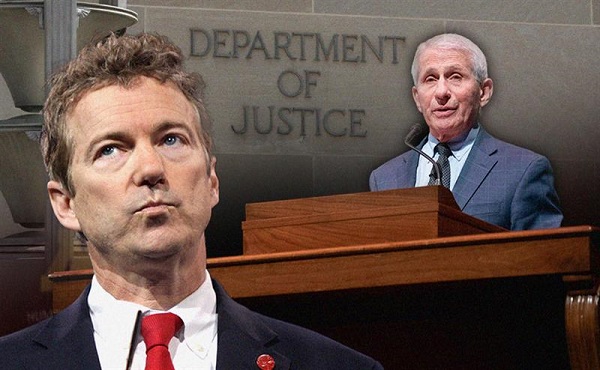
Fr0m LifeSiteNews
‘Perjury is a crime,’ Sen. Rand Paul declared on X. ‘And Fauci must be held accountable.’
Sen. Rand Paul announced Monday that he is again pressuring the U.S. Department of Justice (DOJ) to launch a criminal probe of Dr. Anthony Fauci after The New York Times revealed his 11th-hour pardon by the Biden administration is likely invalid.
“Today, I will reissue my criminal referral of Anthony Fauci to Trump DOJ!” declared Paul, later adding, “Perjury is a crime. And Fauci must be held accountable.”
By late in the afternoon on Monday, the Kentucky senator had composed a letter to Attorney General Pam Bondi citing the times he believed Fauci had lied under oath during congressional hearings and urging the DOJ to finally investigate Fauci.
“In July 2023, I referred Dr. Anthony Fauci to the Department of Justice for lying under oath to Congress. His own emails directly contradicted his sworn testimony,” Paul wrote X.
“NYT reports Fauci was quietly pardoned by an autopen, operated by Biden’s staff. If the President didn’t authorize this pardon personally, then the Department has a duty to investigate and prosecute as it would any ordinary citizen,” Paul said.
“Fauci has been sainted by the extremist Left, but it doesn’t erase his lying before Congress,” Paul said. “I am officially re-referring Dr. Fauci to the DOJ.”
In July 2023, I referred Dr. Anthony Fauci to the Department of Justice for lying under oath to Congress. His own emails directly contradicted his sworn testimony.@NYT reports Fauci was quietly pardoned by an autopen, operated by Biden’s staff. If the President didn’t authorize… pic.twitter.com/j0wrt6QdoJ
— Senator Rand Paul (@SenRandPaul) July 14, 2025
Sen. Paul concluded his letter to Bondi by explaining that his autopen pardon is now seen to be illegitimate:
On January 19, 2025, Dr. Fauci was issued a full and unconditional pardon for any offenses that he may have committed or taken part in since 2014. Dr. Fauci was included among a group of individuals granted unprecedented preemptive pardons on President Joe Biden’s final day in office. However, new information has revealed that these pardons were executed via autopen, with no documented confirmation that the President personally reviewed or approved each individual grant of clemency.
According to reports, White House staff authorized the use of the autopen to issue the clemency documents. This raises serious constitutional and legal concerns about the legitimacy of Dr. Fauci’s Pardon.
President Donald Trump told reporters on Monday that the constant reliance on the autopen by the Biden administration is “one of the biggest scandals that we’ve had in 50 to 100 years.”
“I guarantee (Biden) knew nothing about what he was signing,” Trump asserted.
“I guarantee it,” he emphasized.
Fauci’s mendacious relationship with Congress
The senator from the Bluegrass State and Dr. Fauci have long had a combative relationship.
In 2021, Sen. Paul alleged that Fauci, who then served as director of the National Institutes of Allergy and Infectious Disease (NIAID) and as medical adviser to former President Joe Biden, “lied to Congress” when he claimed that the National Institutes of Health (NIH), of which the NIAID is a part, was not funding and had never funded “gain-of-function” research in Wuhan, China.
Then in 2023, Paul again filed a criminal referral to the DOJ against the White House COVID czar for lying to Congress about his role in subsidizing controversial gain-of-function (GOF) research that was suspected of contributing to the COVID outbreak.
“We have him dead to rights, the problem is this: we have Merrick Garland who I think is a pure rank partisan,” Paul said at the time. “I don’t think he’ll ever be prosecuted. We also have a Democrat Party that is happy to have paid him more than the president, more than any president makes and he actually got a million dollars from a private foundation while he was still a public servant. Everything about this is rotten to the core and if we don’t bring him to justice we’ll never get the control we need on this type of research to try and prevent it from happening again.”
Paul has said multiple times that Dr. Fauci should “go to prison” for lying to Congress.
Business
Conservatives demand probe into Liberal vaccine injury program’s $50m mismanagement
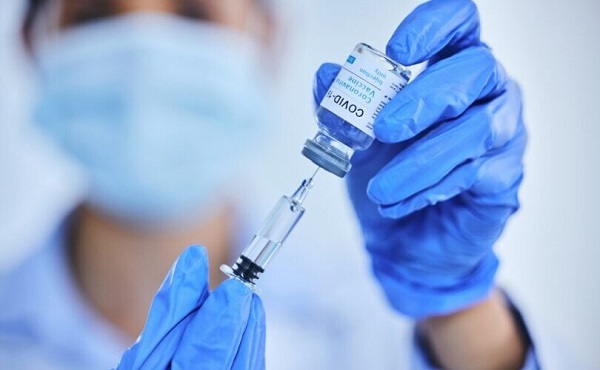
From LifeSiteNews
The Liberals’ Vaccine Injury Support Program is accused of mismanaging a $50-million contract with Oxaro Inc. and failing to resolve claims for thousands of vaccine-injured Canadians.
Conservatives are calling for an official investigation into the Liberal-run vaccine injury program, which has cost Canadians millions but has little to show for it.
On July 14th, four Conservative Members of Parliament (MPs) signed a letter demanding answers after an explosive Global News report found the Liberals’ Vaccine Injury Support Program (VISP) misallocated taxpayer funds and disregarded many vaccine-injured Canadians.
“The federal government awarded a $50 million taxpayer-funded contract to Oxaro Inc. (formerly Raymond Chabot Grant Thornton Consulting Inc.). The purpose of this contract was to administer the VISP,” the letter wrote.
“However, there was no clear indication that Oxaro had credible experience in healthcare or in the administration of health-related claims raising valid questions about how and why this firm was selected,” it continued.
Canada’s VISP was launched in December 2020 after the Canadian government gave vaccine makers a shield from liability regarding COVID-19 jab-related injuries.
However, mismanagement within the program has led to many injured Canadians still waiting to receive compensation, while government contractors grow richer.
“Despite the $50 million contract, over 1,700 of the 3,100 claims remain unresolved,” the Conservatives continued. “Families dealing with life-altering injuries have been left waiting years for answers and support they were promised.”
Furthermore, the claims do not represent the total number of Canadians injured by the allegedly “safe and effective” COVID shots, as inside memos have revealed that the Public Health Agency of Canada (PHAC) officials neglected to report all adverse effects from COVID shots and even went as far as telling staff not to report all events.
The PHAC’s downplaying of vaccine injuries is of little surprise to Canadians, as a 2023 secret memo revealed that the federal government purposefully hid adverse effect so as not to alarm Canadians.
Of the $50.6 million that Oxaro Inc., has received, $33.7 million has been spent on administrative costs, compared to only $16.9 million going to vaccine-injured Canadians.
The letter further revealed that former VISP employees have revealed that the program lacked professionalism, describing what Conservatives described as “a fraternity house rather than a professional organization responsible for administering health-related claims.”
“Reports of constant workplace drinking, ping pong, and Netflix are a slap in the face to taxpayers and the thousands of Canadians waiting for support for life altering injuries,” the letter continued.
Regardless of this, the Liberal government, under Prime Minister Mark Carney, is considering renewing its contract with Oxaro Inc.
Indeed, this would hardly be the first time that Liberals throw taxpayer dollars at a COVID program that is later exposed as ineffective and mismanaged.
Canada’s infamous ArriveCan app, which was mandated for all travelers in and out of Canada in 2020, has cost Canadians $54 million, despite the Public Health Agency of Canada admitting that they have no evidence that the program saved lives.
Details regarding the app and the government contracts surrounding it have been hidden from Canadians, as Liberals were exposed in 2023 for hiding a RCMP investigation into the app from auditors.
An investigation of the ArriveCan app began in 2022 after the House of Commons voted 173-149 for a full audit of the controversial app.
-

 Business1 day ago
Business1 day agoMark Carney’s Fiscal Fantasy Will Bankrupt Canada
-

 Opinion1 day ago
Opinion1 day agoCharity Campaigns vs. Charity Donations
-

 Alberta1 day ago
Alberta1 day agoTemporary Alberta grid limit unlikely to dampen data centre investment, analyst says
-
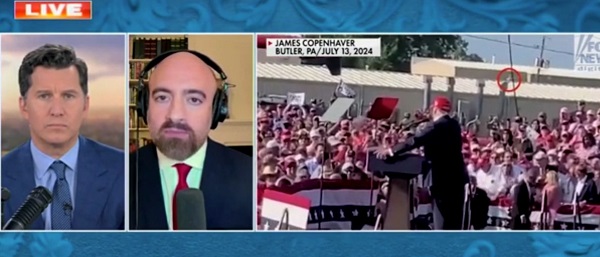
 Daily Caller1 day ago
Daily Caller1 day ago‘Strange Confluence Of Variables’: Mike Benz Wants Transparency Task Force To Investigate What Happened in Butler, PA
-

 Frontier Centre for Public Policy2 days ago
Frontier Centre for Public Policy2 days agoCanada’s New Border Bill Spies On You, Not The Bad Guys
-

 Uncategorized2 days ago
Uncategorized2 days agoCNN’s Shock Climate Polling Data Reinforces Trump’s Energy Agenda
-

 Opinion1 day ago
Opinion1 day agoPreston Manning: Three Wise Men from the East, Again
-
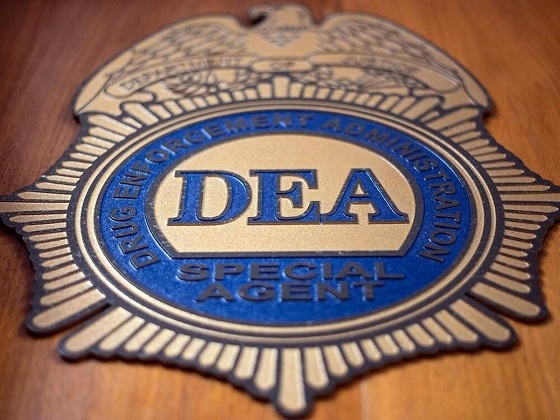
 Crime12 hours ago
Crime12 hours agoDEA Busts Canadian Narco Whose Chinese Supplier Promised to Ship 100 Kilos of Fentanyl Precursors per Month From Vancouver to Los Angeles


